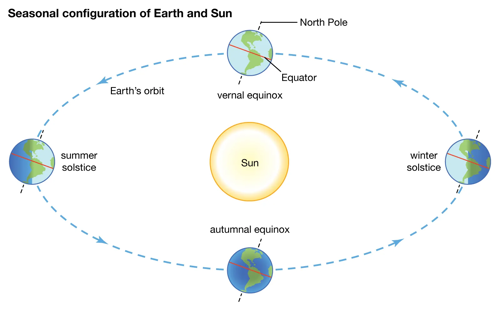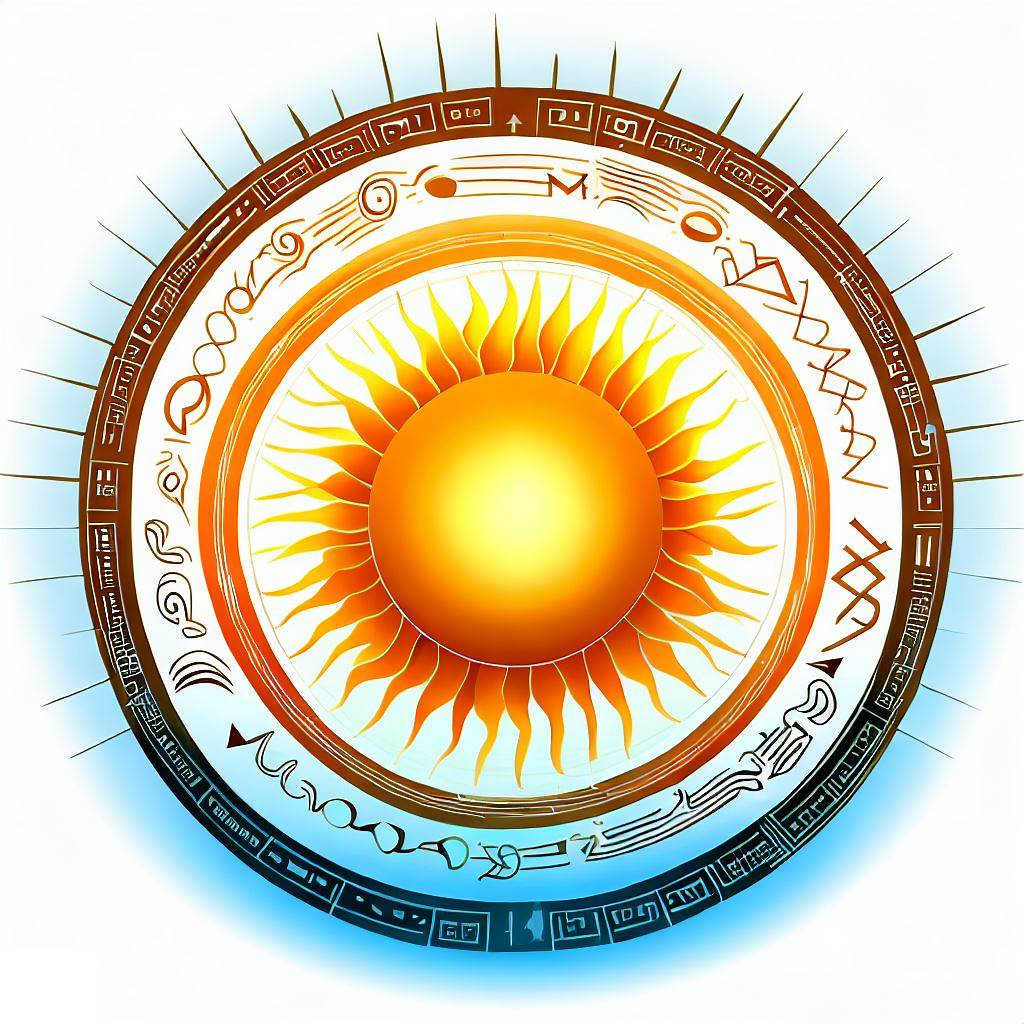As the earth orbits the sun, it gifts us with a kaleidoscope of celestial events. Among these, the summer solstice holds a special place, heralding the arrival of the longest day of the year. This remarkable astronomical occurrence marks a significant moment when the sun reaches its highest point in the sky, illuminating the world with an abundance of light and warmth. In this blog, we will delve into the essence of the summer solstice, its historical and cultural significance, and the myriad ways it is celebrated worldwide.
Understanding the Summer Solstice (Northern hemisphere):
The summer solstice, also known as midsummer, occurs annually around June 21st in the northern hemisphere and around December 21st in the southern hemisphere. It is a phenomenon that arises due to the tilt of the Earth's axis. During this time, the tilt causes the North Pole to be inclined towards the sun, resulting in the sun reaching its highest altitude in the sky.

The Magic of Light:
The summer solstice holds tremendous significance because it marks the pinnacle of light. On this day, the sun shines for the longest duration, casting its rays upon the earth for an extended period. As a symbol of life, warmth, and vitality, the abundant sunlight during the summer solstice has captivated cultures throughout history.
Historical and Cultural Significance:
-
Ancient Cultures: The summer solstice has been revered and celebrated by ancient civilizations worldwide. Stonehenge, a prehistoric monument in England, is one such testament to the solstice's significance. The alignment of the stones precisely marks the sunrise on the summer solstice, suggesting its importance in ancient rituals and astronomical observations.
-
Pagan Traditions: In many pagan traditions, the summer solstice represents a time of celebration and honoring nature. It is often associated with fertility, growth, and abundance. Festivals such as Litha in Wiccan traditions and the Midsummer's Eve celebration in Scandinavian cultures are held to commemorate this special day.
-
Sun Worship: The summer solstice holds particular importance in cultures that venerate the sun. Ancient civilizations like the Inca, Aztec, and Egyptian civilizations held grand ceremonies during this time to pay homage to the sun god and seek blessings for a bountiful harvest.
-
Modern Celebrations: Today, the summer solstice continues to be celebrated across the globe. From the lively festivities of the Feast of Saint John in Spain to the mystical celebrations of Inti Raymi in Peru, people gather to honor the sun, engage in rituals, and revel in the joy of light and warmth.
Celebrating the Summer Solstice:
-
Bonfires and Fire Rituals: Bonfires play a significant role in many solstice celebrations. They symbolize purification, renewal, and the triumph of light over darkness. People come together to dance, sing, and leap over the flames, embracing the transformative power of fire.
-
Nature Communion: The summer solstice is an opportune time to connect with nature. Many individuals partake in outdoor activities, such as hiking, camping, or simply basking in the sun's glory. Immersing oneself in the beauty of the natural world during this time fosters a sense of harmony and appreciation.
-
Sun Salutations: Yoga practitioners often celebrate the summer solstice by performing sun salutations, a series of postures that embody the energy and vitality of the sun. These sequences are performed at dawn or sunset, offering a profound connection with the sun and its life-giving energy.
-
Community Gatherings: Whether it's a neighborhood block party, a music festival, or a cultural
gathering, community events play a significant role in celebrating the summer solstice. People come together to share in the joyous atmosphere, participate in traditional rituals, and enjoy music, dance, and delicious food. These gatherings foster a sense of unity and belonging, strengthening the bonds within communities.
-
Floral Decorations: Flowers are often used to adorn homes, public spaces, and altars during summer solstice celebrations. Bright and vibrant blooms symbolize the vitality and abundance of the season. Traditional customs include creating flower wreaths, garlands, and bouquets, which are worn or displayed as a symbol of beauty and fertility.
-
Reflection and Intention Setting: The summer solstice provides an opportunity for introspection and setting intentions for the months ahead. Many individuals take time to reflect on personal growth, express gratitude for the blessings in their lives, and set goals for the future. Journaling, meditation, and creating vision boards are common practices during this time.
Let's delve into the scientific explanation behind the summer solstice, the longest day of the year.
Earth's Axial Tilt:
The key factor that determines the occurrence of the summer solstice is the tilt of the Earth's axis. The Earth orbits the Sun in a slightly tilted position, roughly 23.5 degrees relative to its orbital plane. This tilt is responsible for the changing seasons and the varying lengths of daylight throughout the year.
Sun's Path and Declination:
Due to the Earth's axial tilt, the Sun's position in the sky changes over the course of the year. During the summer solstice, the Northern Hemisphere is tilted toward the Sun, causing it to reach its highest point in the sky at noon. This creates the longest day of the year, as the Sun is above the horizon for the maximum amount of time.
The Tropic of Cancer:
The Tropic of Cancer, located at approximately 23.5 degrees north latitude, plays a crucial role in the occurrence of the summer solstice. On the day of the summer solstice, the Sun's rays directly hit the Tropic of Cancer at solar noon. This is the furthest point north where the Sun appears directly overhead during the year.
Daylight Duration:
The summer solstice is characterized by an extended period of daylight. The exact length of the day depends on the latitude. The closer an observer is to the North Pole, the more daylight they will experience on this day. At the Arctic Circle (66.5 degrees north latitude), the sun remains above the horizon for a full 24 hours, leading to the phenomenon known as the midnight sun.
The Relationship Between Latitude and Day Length:
The relationship between latitude and day length is governed by the angle at which sunlight strikes the Earth's surface. The higher the latitude, the more oblique the Sun's rays are, resulting in a larger area of the Earth's surface being illuminated. As a result, locations closer to the poles experience longer days during the summer solstice compared to regions closer to the equator.
Atmospheric Refraction:
Another factor that contributes to the extended daylight during the summer solstice is atmospheric refraction. The Earth's atmosphere acts like a lens, bending or refracting the Sun's rays as they pass through it. This bending of light causes the Sun to appear slightly higher in the sky than it actually is, which further lengthens the duration of daylight.
Seasonal Changes:
The summer solstice not only marks the longest day of the year but also signifies the official start of summer in the Northern Hemisphere. After the summer solstice, the days gradually become shorter as the Earth continues its orbit around the Sun. The tilt of the Earth's axis causes the Sun's position in the sky to gradually decrease until the winter solstice, when the Northern Hemisphere experiences the shortest day of the year.
Conclusion: The summer solstice, the longest day of the year, invites us to embrace the abundant light and warmth that envelops our planet. It holds a rich tapestry of historical, cultural, and spiritual significance, celebrated in diverse ways around the world. Whether through ancient rituals, modern gatherings, or personal reflections, the summer solstice offers us a profound connection with nature, the sun, and the cycles of life. As we honor this celestial phenomenon, let us bask in the radiance of the sun, celebrate the beauty of the natural world, and embrace the limitless possibilities that lie ahead.
Discover More
Most Viewed
Christmas is a season of joy, love, and traditions. And what better way to get into the holiday spirit than through timeless carols? These musical gems have been bringing people together for generations. Here’s our ranked list of the Top 10 Christmas Caro…
Read More

















